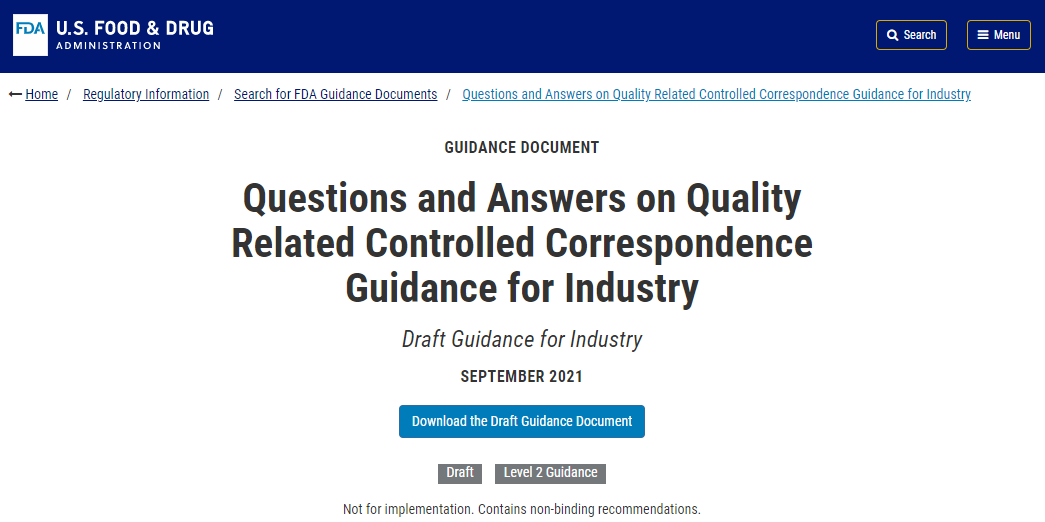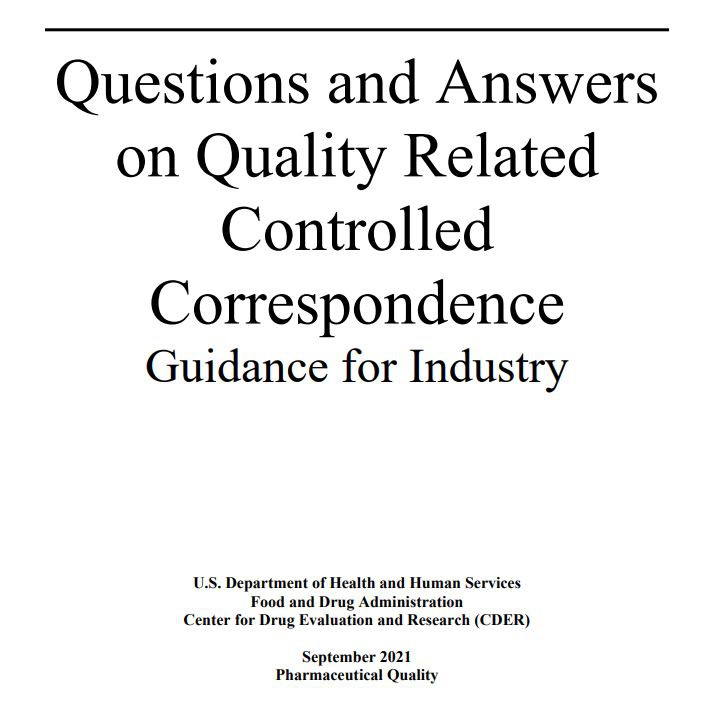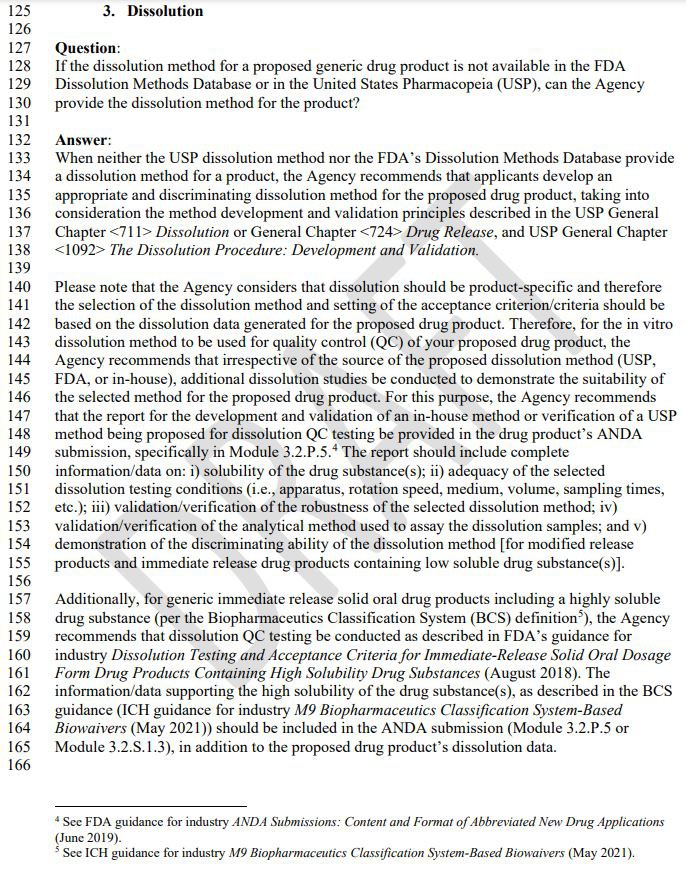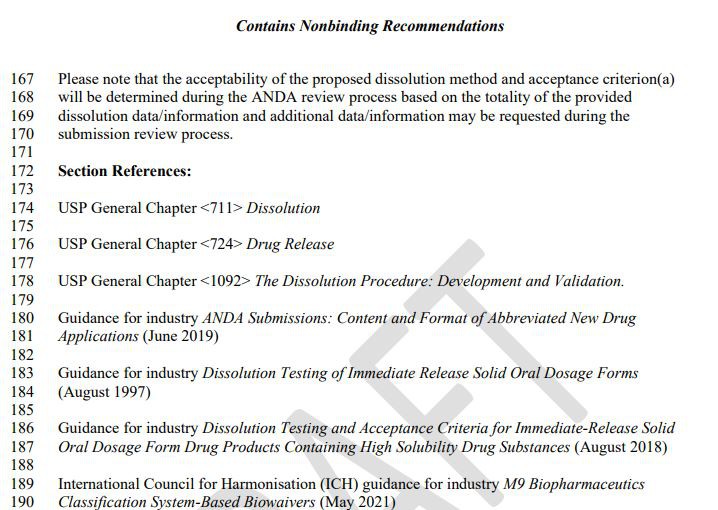
If you have any question, please feel free to email us. We will touch with you as soon as possible.
On September 20, the FDA issued Questions and Answers on Quality Related Controlled Correspondence Guidance for Industry, which clearly pointed out the relevant issues: If the FDA dissolution method database or the United States Pharmacopoeia (USP) does not have a proposed dissolution method for generic drugs, can the FDA provide the The dissolution method of the product? See how the FDA regulates it!

problem:
If there is no proposed dissolution method for a generic drug in the FDA dissolution method database or the United States Pharmacopoeia (USP), can the FDA provide a dissolution method for the product?
Reply:
When neither the USP dissolution method nor the FDA's dissolution method database provide a product dissolution method, the FDA recommends that the applicant develop a suitable and distinguishing dissolution method for the proposed drug, taking into account the USP General Chapter <711> Dissolution or General Chapter < 724>Drug release, and USP General Chapter <1092> Dissolution Procedure: Development and Verification.
Please note that FDA believes that dissolution should be product-specific, so the selection of dissolution methods and the setting of acceptance criteria/standards should be based on the dissolution data generated for the proposed drug product. Therefore, for the in vitro dissolution method used for the quality control (QC) of your proposed drug product, the FDA recommends that, regardless of the source of the proposed dissolution method (USP, FDA, or internal control), additional dissolution studies should be conducted to prove the selected method Applicability to the proposed drug. For this reason, FDA recommends that in the ANDA submission of drugs, especially in module 3.2.P.5., the development and verification report of the internal control method or the confirmation report of the USP method recommended for dissolution QC testing should be provided.
The report should include complete information/data on:
i) The solubility of the bulk drug;
ii) The adequacy of the selected dissolution test conditions (i.e. instrument, speed, medium, volume, sampling time, etc.);
iii) Verify/verify the robustness of the selected dissolution method;
iv) Confirmation/validation of the analytical method used to determine the dissolution sample;
v) Demonstrate the distinguishing ability of dissolution methods [for sustained-release products and immediate-release drugs containing low-solubility APIs]
In addition, for immediate-release oral solid generic drugs that include high-solubility APIs (as defined by the Biopharmaceutical Classification System (BCS)), the FDA recommends dissolution QC testing in accordance with the following FDA guidelines:
Dissolution Testing and Acceptance Criteria for Immediate-Release Solid Oral Dosage Form Drug Products Containing High Solubility Drug Substances (August 2018).
In addition to the dissolution data, the ANDA submission data (module 3.2.P.5 or module 3.2.S.1.3) should include test data supporting the high solubility of the drug substance (for the test method, see BCS guideline M9 Biopharmaceutics Classification System-Based 164 Biowaivers (May 2021))
Please note that the acceptability of the recommended dissolution method and acceptance criteria (a) will be determined during the ANDA review process based on the overall dissolution data/information provided, and additional data/information may be required during the review process.
Chapter reference:
USP General Chapter <711> Dissolution
USP General Chapter <724> Drug Release
USP General Chapter <1092> The Dissolution Procedure: Development and Validation.
Guidance for industry ANDA Submissions: Content and Format of Abbreviated New Drug Applications (June 2019)
Guidance for industry Dissolution Testing of Immediate Release Solid Oral Dosage Forms (August 1997)
Guidance for industry Dissolution Testing and Acceptance Criteria for Immediate-Release Solid Oral Dosage Form Drug Products Containing High Solubility Drug Substances (August 2018)
International Council for Harmonisation (ICH) guidance for industry M9 Biopharmaceutics Classification System-Based Biowaivers (May 2021)



Tel:+86-020-61855200-902
Fax:+86-020-66392525
Email:info@upharm.cn
Address:12th floor, No. 181, Kexue Avenue, Huangpu District, Guangzhou, China